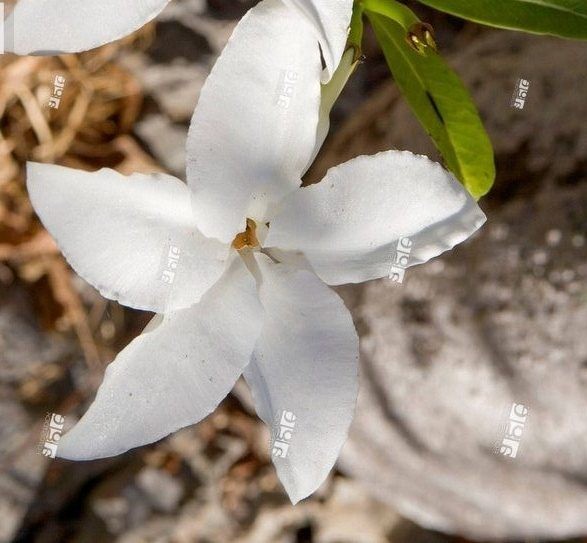Pachypodium ambongense
(Pachypodium ambongense)

Description
Pachypodium ambongense is a species of plant in the family Apocynaceae. It was first published as a species of the genus Pachypodium in 1924 by the botanist Henri Louis Poisson. Endemic to Madagascar. The Namoroka Nat. 8. Rare in the landscape. Having a habit as a shrub that is 1–2 m (3+1⁄2–6+1⁄2 ft) and bottle-shaped, Pachypodium ambongense inhabits the western low, open deciduous forest of Madagascar on a substrate of Mesozoic calcareous rock. It is fairly rare to the landscape, perhaps, suggesting a more specialized environment needed for it to grow. It is known by common name in Madagascar as "Songosongo" or "Betono." As a shrub 1–2 m (3+1⁄2–6+1⁄2 ft) high with a subglobose, not entirely spherical, laterally compressed, flattened on a side habit; it has a diameter ranging from 10–40 cm (4–16 in). Overall it resembles a bottle-shape in habit. The bark is grey-green and smooth or it has leaf scars. Overall Pachypodium ambongense has a bottle-shaped profile. Its short branches form right below the terminal inflorescence and measure from 7–18 cm (3–7 in) in diameter. P. ambongense's branchlets are 18 mm–40 mm × 5 mm–6 mm (11⁄16 in–1+9⁄16 in × 3⁄16 in–1⁄4 in). They are covered with paired straight spines, 20 mm–100 mm × 5 mm–30 mm (3⁄4 in–4 in × 1⁄4 in–1+1⁄4 in) at the base. When young they are sparsely pubescent, or hairy. Pachypodium ambongense grows on strongly eroded, Mesozoic calcareous rocks where the fissures are filled with humus. in the low open deciduous forest of the Western Forest zone, tolerating full sun to part sun. This habitat is consistency with the general tendency of Pachypodium to inhabit the western side of the island. Growing on a calcareous substrate suggests that this plant prefers only basic soil conditions, as Rapanarivo et al. did not find P. ambongense growing on other substrates as some species of Pachypodium do. Also its preference for low open forest mean that it can be found growing at an altitude of 100 m (328 feet) or less. The plants that are often associated with its habitat are: Adenia firingalavensis Harms (Passifloraceae); Aloe sp. (Asphodelaceae); Cissus sp. (Vitaceae); Euphorbia viguieri (Euphorbiaceae); Lomatophyllum sp. (Liliaceae); Pachypodium rutenbergianum (Apocynaceae); Pandanus sp. (Pandanaceae); Uncarina sakalava Uncarina perrieri (Pedaliaceae); and Xerosicyos perrieri (Cucurbitaceae).
Taxonomic tree:







